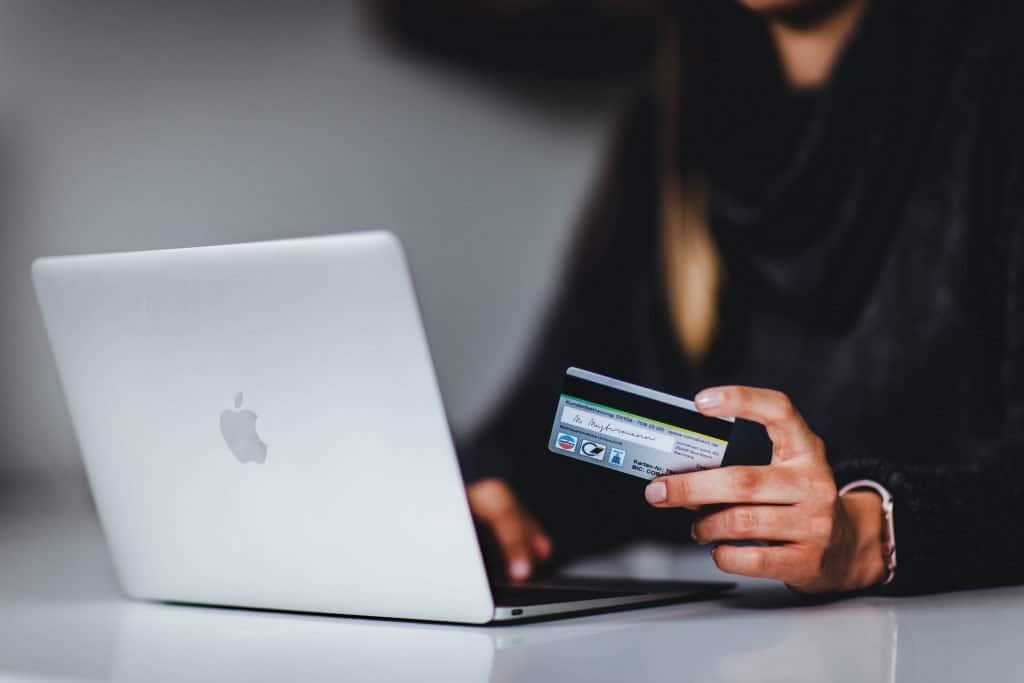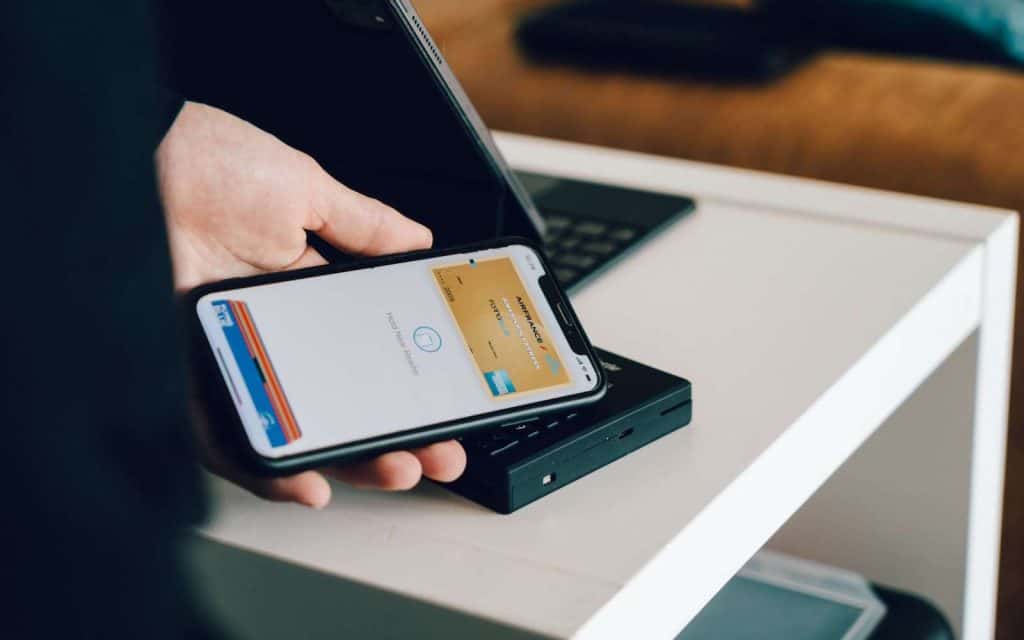Mobile payments and mobile payment systems have become ubiquitous. According to Fortune Business Insights, the global mobile payment market was valued at $1.18 trillion in 2019 and is projected to grow to $8.94 trillion by 2027. The adoption of mobile payments is fuelled by smartphone uptake, high-speed mobile data networks, and the growth of eCommerce. Recently, the COVID-19 pandemic precipitated further growth as the demand for contactless payments soared following recommendations by the World Health Organization (WHO). People are working more from home and are wary of public shopping areas.
Table of Contents
ToggleWhat is Mobile Payment?
Mobile payment definition varies depending on whom you ask but there is consensus that mobile payment is any use of a portable electronic device to send and receive money. Mobile payments are also referred to as Mobile Money Transfer, mobile money, or simply m payments.
How Does Mobile Payment Work?
How mobile payments work depends on the underlying technology of the mobile payment system. There are many types of mobile payments, and each operates differently from the other. Similar services may also have subtle differences in actual operation.
Types of Mobile Payments

Let’s now consider the different types of mobile payments and examine how each works in detail, with examples of mobile payments. There are broad categories of mobile payments as follows:
- In-store and remote payments
- Remote payments
- Point-of-sale solutions
In-Store and Remote Payments
In-store payments refer to contactless payments made by buyers while they are physically present in a shop. Remote payments refer to situations where someone uses a mobile device to send funds to a merchant or other person in a different geographic area. Let’s consider some examples.
Mobile Wallets
Also known as digital wallets, mobile wallets store payment information on a mobile device. This information is usually stored in a mobile application and in some cases, a SIM application toolkit (STK). Different technologies are used during the payment process, for example, both the sender and recipient receive an SMS. Near Field Communication (NFC) technology is also prevalent, as are QR codes.
The pioneer of mobile wallet technology running on an STK is Safaricom, a Vodafone subsidiary in Kenya. Their mobile payment platform, dubbed Mpesa, enables mobile phone users to transfer funds using encrypted SMS. Senders and recipients can deposit and withdraw cash at any of the over 160,000 Mpesa kiosks located around the country. Users can also transfer and withdraw funds from bank accounts. They can also make payments for goods and services at merchant outlets.
Apple Pay cuts across several categories in that it allows contactless in-store payments where the user authenticates using their fingerprint at a card terminal. The service also offers in-app purchases and Internet payments.
Other examples of mobile wallets include Google Pay and Samsung Pay.
Mobile wallets offer an excellent level of security through encryption and tokenization.
Quick response (QR) Code Payments
A QR code is a two-dimensional matrix bar code containing machine-readable optical information. A QR code mobile app scanner can scan and read the data in a QR code.
(Image source: Wikipedia)
To use a QR code for in-store payments, the buyer scans a QR code at checkout through a mobile application. The customer’s mobile wallet is then debited with the purchase amount.
QR Codes are a preferred alternative to entering credit card details manually. They also prevent the theft of credit data by unscrupulous merchants working in cahoots with criminals.
Remote Payments
Below are some examples of remote mobile payments.
Internet Payments
Most people simply make payments using a web browser such as Chrome, Firefox, or Safari. They also make apps via mobile apps, for example, gaming apps such as Candy Crush or within social media apps such as Facebook, Twitter, and Instagram. This is usually done by manually entering the credit card details on a payment page or charging a preapproved card connected to a mobile app. Payments are also done using online money remittance services like Paypal or following links to digital invoices.
Payment Links
This is closely related to Internet payments. A link is sent to someone via email or text message. Upon clicking the link, the user is directed to a checkout page where they enter their credit card details. The transaction amount can be configured in advance by the merchant or left blank for the customer to enter.
SMS
Also known as premium SMS, SMS payments are a popular way to pay for ring tones and other digital goods. Once a user subscribes to a premium SMS service by sending a text message or dialing a short-code, the fee is added to their phone bill or taken out of their prepaid credit.
Direct Operator Billing
In direct operator billing, the user enters their phone number on a checkout page. The cost is added to their mobile phone bill or deducted from their prepaid credit. Google Play Store and Apple’s App store offer this option. It is a popular option to pay for digital content subscriptions, charity donations, and television voting.
Mobile Banking
In many countries today, mobile banking is the defacto method for bank transfers and bill payments. Banks provide customers with a mobile app which they use to log into their account, perform transactions, and communicate with the bank. However, mobile apps have proved to be a key attack vector by cybercriminals. Using fake apps and app hijacking, criminals can obtain customer login data and steal funds. To mitigate this risk, many banks use two-step login verification and one-time passwords (OTP) to secure customer accounts.
Point-of-sale Solutions
As the name suggests, point-of-sale mobile payments are contactless payments at the merchant’s place of business. We mention some of the most popular examples below.
Near-field Communication (NFC) payments
NFC is a set of communications protocols that dictate how two devices about ten centimeters apart communicate by making use of close-proximity radio frequency identification technology. An NFC enabled mobile phone communicates with an NFC enabled card machine, and encrypted payment data is exchanged between both devices instantly. This technology makes electronic mobile payment possible without the sender paying in cash or a credit card. NFC technology isn’t only used at merchant outlets to purchase goods, it is also widely used in public transport in the UK, Japan, and China.
Sound Waves-Based Payments
This is a new cutting-edge mobile payment solution. It eliminates the need for an Internet connection. A payment terminal sends payment data to the mobile device via sound waves. The mobile phone then converts into the analog format and completes the transaction. All that the mobile phone needs is a simple software installation. No extra hardware is required. This fact makes it a viable mobile payments solutions in low-income places where the cost of smartphones remains a barrier to adoption.
Magnetic Secure Transmission (MST) payments
An MST mobile payment is effected when a mobile device emits a signal that imitates the magnetic stripe on a credit card. The card terminal senses the signal and processes the payment as though a physical card hard been run through the terminal. Card terminals require a software update to use this technology. Samsung is one of many companies that use both NFC and MST payments. Both technologies are secured using advanced tokenization.
Benefits of Mobile Payments
Mobile payments are a disruptive technology that has had far-reaching implications for how business is conducted. It has also had a tremendous social impact in low and middle-income countries.
The fast adoption of mobile payments can be explained by the Theory of Technology Acceptance Model (TAM). This model explains how people come to accept and use technology. According to this model, two main factors influence people’s decision on whether to use new technology, these include:
- Perceived usefulness: how new technology enhances a person’s performance.
- Perceived ease-of-use: perceived effort needed to use the technology.
These two are the primary determinants that determine a person’s attitude towards new technology but they are also influenced by other variables as shown in the image below.
(Image source: Research Gate)
Mobile technologies are perceived as being highly useful and requiring minimal effort.
Let’s consider some of the benefits of mobile payments below.
Easy Access
There is no question that mobile payments are easier to access for both senders and receivers. With a mobile device in your palm, you have easy access to your money. Compare this to prior revolutionary technologies such as ATMs where you have to walk or drive to a cash dispensing machine. The greatest beneficiaries of mobile payments are small and micro-businesses all over the world. They spend less time going to the bank to deposit and withdraw cash more time running their businesses. This may not seem like a big deal when looked from the point of view of an individual but when millions of people in an economy are more efficient due to time saved and better logistics, there is faster economic growth. For economies that have lagged behind, mobile payments are proving to be the leapfrog technology needed to catch up with mature economies.
Convenience and Security
Easy access is convenient. But, there is also the fact that you can make and receive payments with little physical effort. People are running businesses from their living rooms with the mobile phone as their only tool.
Mobile payments are also more secure than conventional payment methods. At their most basic, no one can see how much money you have in your mobile wallet and then plan to rob you in an alley. Also, unlike credit cards which are easy to steal and hack, most mobile payments use advanced encryption and tokenization. There are also many security levels, a criminal would have to first steal your phone. After that, they would have to find a way to unlock it and then still be faced with the daunting task of guessing or hacking your mobile wallet password. Point-of-sale mobile payments require users to identify themselves biometrically or via a PIN input. Better security translates to more economic activity and overall growth in a nation’s gross domestic product (GDP).
Banking the Unbanked
Before mobile payments, the majority of the world’s population was unbanked. The world was characterized by financial exclusion. People whose incomes were too low or informal for conventional banking practices dealt in cash and created informal financial ecosystems to meet their needs. This meant that it wasn’t possible for them to access conventional finance to expand their businesses and fund other needs such as housing and education. Mobile payments have brought these people into the mainstream. According to the World Bank, almost 4 billion people globally now have a bank account or an account at a mobile money service provider. Access to financial services is critical to poverty and inequality reduction. In this regard, mobile payments complement The United Nations Sustainable Development Goals on poverty elimination and reduced inequality.
FAQ
A: Mobile payments refer to financial transactions conducted through a mobile device, such as a smartphone or tablet. They involve using mobile apps, Near Field Communication (NFC), or QR codes to facilitate payments. Mobile payment apps securely store payment information, allowing users to make purchases in-store or online by simply scanning, tapping, or entering their credentials on their mobile device.
A: The different types of mobile payment methods include mobile wallets (e.g., Apple Pay, Google Pay), mobile banking apps, peer-to-peer payment apps (e.g., Venmo, PayPal), carrier billing, and QR code payments (e.g., Alipay, WeChat Pay).
A: The benefits of mobile payments include convenience, speed, enhanced security, tracking and organization of transactions, and the availability of rewards and loyalty programs.
A: Some examples of mobile payment services include Apple Pay, Google Pay, PayPal, Venmo, and Alipay.
A: Mobile payments employ several security measures to protect user information and transactions. These measures include encryption, tokenization, biometric authentication (such as fingerprint or facial recognition), and transaction notifications. Additionally, many mobile payment apps offer the ability to remotely disable payment functionality in case of a lost device. However, users should also follow best practices like using secure networks, keeping devices updated, and safeguarding credentials to ensure secure mobile payments.






